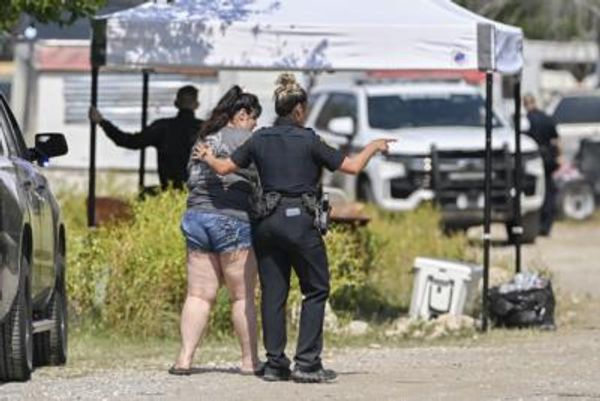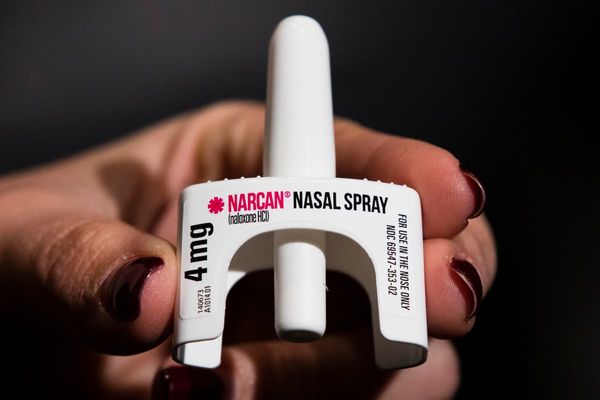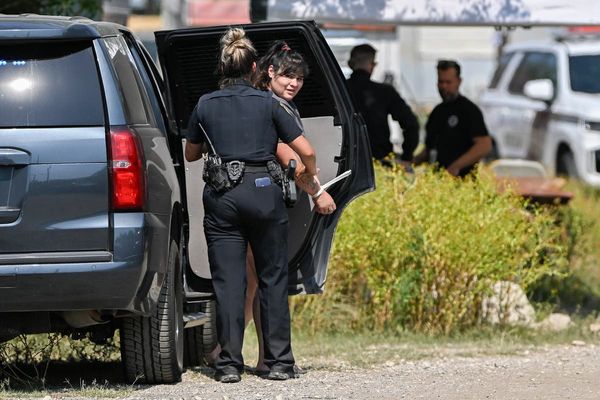
When the Walmart on Atlanta’s Martin Luther King Jr. Drive reopens next May after arsonists set fire to the big box store, it will come with a new feature to hit back at a growing wave of crime.
According to Atlanta city officials, it will include for the first time a police department substation to reduce the risk of theft and violence in a store viewed as critical to the low-income neighborhood of Vine City.
“You’re thinking about going into this Walmart to do some shoplifting or a robbery or whatever–you see the APD logo and you say, ‘ah, not today’,” Atlanta mayor Andre Dickens told the community when presenting the new concept recently.
"Folks were saying they want to see more police presence," Dickens later told a local paper.
Life without Walmart
The months without a Walmart have been tough on the community. “It’s like you being in no-man’s land without the Walmart,” Allie Love told metro broadcaster Channel 11 last week.
When it opened in 2012, residents who previously had to travel miles, sometimes on foot, to the local Krogers finally had a supermarket of their own to buy groceries like fresh fruits and vegetables—a major public health concern in poorer areas.
The December fire, believed to have been set as a diversion to enable theft, sparked concerns the nation’s largest retailer would permanently close the location.
Instead it is being downsized to the status of a Neighborhood Market focusing on daily essentials like food and pharmaceuticals rather than a traditional Supercenter to prevent Vine City from becoming a “food desert” as feared.
Theft—or shrinkage as it is sometimes called within the industry—is probably the second biggest concern facing retailers today right after the health of the U.S. consumer.
Social media is full of videos of shoplifters brazenly making off with store property in clear daylight that then further feeds the “perception that anything goes”.
$100 billion problem for U.S. retailers
Company decisions can even indirectly contribute to this feeling of lawlessness. Not far from Vine City, staffers at a Lululemon in Peachtree Corners outside of Atlanta were summarily sacked in June for confronting masked robbers. “They’re trained to step back, let the theft occur,” CEO Calvin McDonald told CNBC, adding “it’s only merchandise.”
According to the National Retail Federation, theft is a nearly $100 billion problem in the United States. Worse, eight in ten retailers surveyed reported that violence and aggression associated with organized retail crime is on the rise compared to the previous year.
Late last month Dick’s Sporting Goods blamed poor Q2 results primarily on rising theft.
This epidemic of crime poses an additional strain on traditional high street retailers already struggling to cope with the cost of maintaining brick-and-mortar stores versus leaner e-commerce competitors like Amazon that market goods online.
California has been hit particularly hard. Nordstrom recently was forced to close its doors in San Francisco, a city where a chasm of income inequality has led to vast wealth and soul-crushing poverty.
Many blame a November 2014 change in California laws called Proposition 47 that aimed to reduce overcrowded prisons by raising the threshold for felony theft. In so doing, it is blamed for inadvertently encouraging a tsunami of shoplifting so overwhelming, there is no possibility for law enforcement or the justice system to cope.
California may be the best known example, but in total at least 40 U.S. states have increased the dollar threshold since 2000–in part to account for inflation. The U.S. Chamber of Commerce argued last year that criminals are taking advantage of this to engage in repeated theft while avoiding prosecution.
“If that is not corrected over time, prices will be higher and/or stores will close,” Walmart CEO Doug McMillon told CNBC last December.







